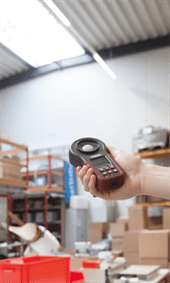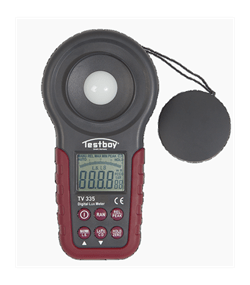LED Lights and the meter to measure them!
LED Lights and the meter to measure them! |
 | There are currently government schemes throughout Australia to help businesses/homes to switch to LED
(Light-emitting diode) lighting.
The incentive is to help reduce the energy usage by a business/home by replacing existing light
sources that are inefficient
with more energy efficient LED lights. The benefits of switching to LED lights include: reduction of
electricity consumption
and bills, reduced maintenance as LED lights last longer than other bulbs and reduce the
environmental impact contributed by
a business/home.
Current light bulbs contain a filament within a glass bulb of inert gas. When a current is passed though the filament, it will heat up and provide a light source. | |
One main problem with current light bulbs is there is a great deal of energy used to heat up the
filament. LED lights work
differently from a traditional light bulb. LED use a semi-conductor to provide a light source.
By using a semi-conductor,
there is less energy being used so LED lights are cheaper to run. Many LED light bulbs are rated
for a lifespan of 50,000
hours; this is vastly greater than current light sources. This means you won’t need to change
over to a new LED light bulb
as often, so maintenance cost and time is reduced.
When changing over from traditional lighting sources to LED, it is important to check if there is enough lighting in the area. Ensuring there is enough lighting in an area is an important part of occupational health and safety. Proper lighting can reduce eye fatigue and headaches for people that work in an office for long periods. Proper lighting will also prevent workplace accidents by increasing the visibility of dangers and reducing momentary blindness. Standard lux metes are not calibrated to measure light emitted from LED light bulbs. They are calibrated to detect light around a wavelength of 560nm. LED lights bulbs emit a wide range of colour wavelengths including white, red, yellow, green, blue, and purple that are different to traditional lights sources. For example, the wavelength for red LED is 700-640nm, green is 550-520nm, and blue is 480-450nm. For testing of lux for both traditional light bulbs and LED light bulbs, you should use a lux meter that is calibrated for both light sources. The Testboy TV 335 is a digital luxmeter in a practical and robust plastic housing with a large measurement range of up to 400.000 Lux. Due to photo diodes sensitive to artificial light and adjustable colour temperature; it is also suitable to determine the light strength of LED lighting. The large LCD display ensures quick and reliable reading of the measurement result. If you’re still unsure about which lux meter is right for you, contact one of our scientists on
1300 737 871 or at
[email protected] | ||
See our other newsletter articles here!
Contact our expert scientists now to get the right meter or data logger to suit your needs and discuss your project.
Phone: 1300 737 871
Email: [email protected]

